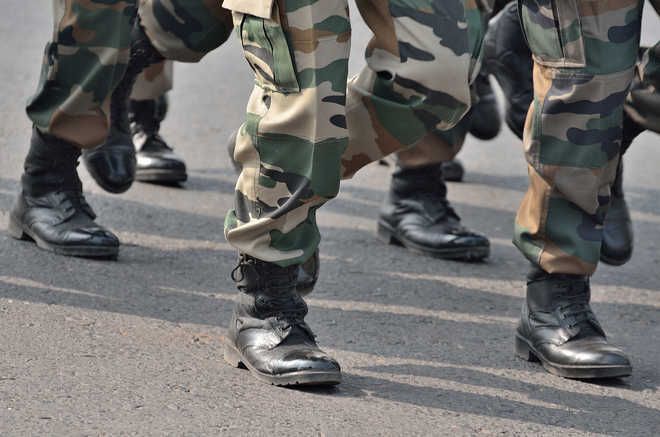Selecting the first Army Chief
AT the end of World War II, there emerged approximately 20 “native” Indian Army officers in their forties, most of whom had led infantry battalions and a few tank squadrons, with utmost courage and distinction, over seething battlefields in Europe, Africa, Middle East, South Asia and South-east Asia. All of them except one were scions of elite feudal families or progeny of royalty, who were granted King’s Commission on graduation from the Royal Military College, Sandhurst, or the Royal Military Academy, Woolwich, both in the UK. But the lone and in time the towering exception was a child of destiny, born into a modest but proud household in the erstwhile Coorg state (present-day Kodagu), who never left the shores of India till drafted for service in WW-II.
On the night of his birth (January 28, 1899), his maternal grandmother had in a dream “heard the sound of horses’ thundering hooves and drum beats… She was convinced that the newborn was destined to be a great military man”. Be that as it may, the child, KM Cariappa, born and schooled at Mercara village in Coorg, next joined the Presidency College, Madras. Soon after, he qualified for the first batch of teenagers to enter the ‘Temporary School for Indian Cadets’ at Daly College, Indore, in 1918. On grant of Commission as 2nd Lieutenant in the Indian Army on December 1, 1919, he aggregated two decades of baptism under fire across the wayward North West Frontier. Concomitantly, he also burnt the midnight oil to become the first Indian to graduate from the Defence Service Staff College, Quetta, and by April 1942, on promotion to Lt Colonel, was placed in command of 17 Rajput battalion, becoming yet again the first Indian to attain that benchmark!
During the course of WW-II, he served in the operational logistics branch, first at HQ 10 Indian Infantry Division in Iraq and Syria, and later at HQ 26 Indian Infantry Division in General Slim’s 14th Army in Burma. It was in this latter appointment that he imbibed the spirit of the 14th Army’s dictum: ‘We shall tackle the impossible immediately, the difficult later!’ In recognition of his services, Lt Col Cariappa was Mentioned-in-Dispatches thrice, followed by the Order of the British Empire on April 5, 1945.
In the run-up to Independence, when it was decided to expose one Army officer and three bureaucrats to hone the politico-military duality paradigm of the higher defence stratagem at Imperial Defence College, London, in 1946, here again Brigadier Cariappa was the chosen one. He was to put that learning to good use as shortly the subcontinent was driven into another savage war over J&K in October 1947.
As Pakistan had the advantage of the first mover, the Indian Army’s initial response was found inadequate to the challenge and the fall of Ladakh seemed imminent. Maj Gen Cariappa, who at the time was overseeing the Army Reorganisation Committee, was promoted to command the newly created Western Command in January 1948 (once again, the first for an Indian!), charged to conduct the J&K war.
As was the General’s wont, the very next day he was at Srinagar, providing inspiring leadership with a resolve that “we will not allow Gen Tariq to capture Leh. We have got to stop this and we will stop it… we have decided to take tanks up the Zoji Pass, a kind of operation which has never been done before.” The rest is history.
The end of the J&K war on January 5, 1949, provided the much-anticipated moment for the Army to have an Indian C-in-C as the tenure of Gen FR Roy Bucher was about to terminate. The choice appeared obvious as among the distinguished pack of about 20, Lt Gen Cariappa stood out. Yet, “there were two other names that were proposed. The first was Lt Gen Maharaj Rajendrasinhji of the Cavalry, brother of the Jam Sahib of Nawanagar. The second was Lt Gen Thakur Nathu Singh of Dungarpur… That stated, it must go to the eternal credit of both General officers, who insisted that the honour of being India’s first C-in-C should rightly be ‘Kipper’s’ because he was the seniormost Indian officer” — this was placed on record by Air Marshal KC Cariappa (retd) in his father’s biography.
The Government of India had not been lacking in grace as evidenced from Sardar Patel’s letter: “…your record of achievements inspires our confidence in your ability to lead your men at such a critical period of the country’s history and I can assure you that we on our part will extend to you all goodwill and cooperation.”
So, on January 15, 1949, a ramrod straight man, along with a boy not yet in his teens and a seven-year-old girl were perhaps the first visitors at the Gandhi Samadhi. After dropping his children home, Gen KM Cariappa walked into the appointed high office sans any ceremonial trappings or Guard of Honour!









